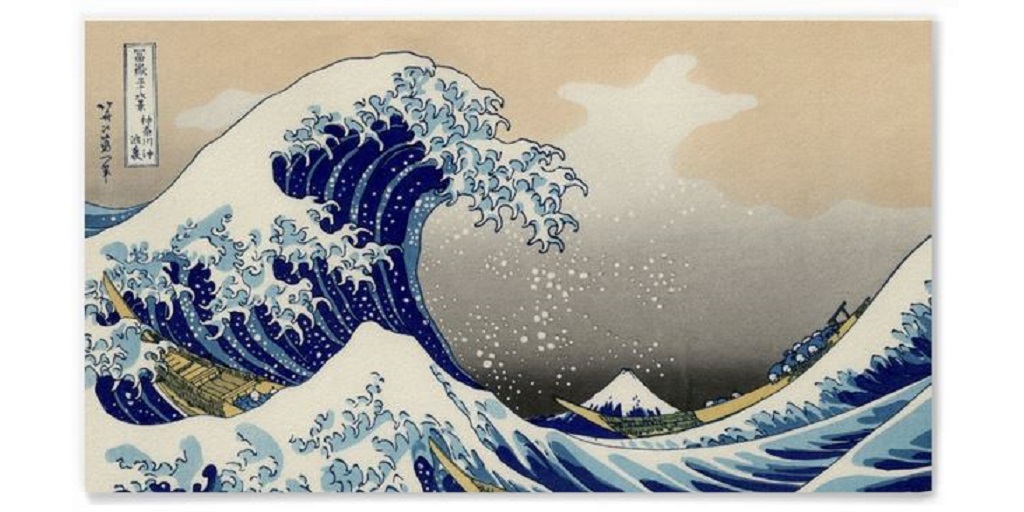In a world marked by increasing complexity and constant noise, the allure of Japanese minimalism has captured the imagination of many seeking tranquility and simplicity in their daily lives.
Rooted in Zen philosophy, Japanese minimalism offers a timeless approach to house and room decor that harmonizes with our surroundings and fosters a sense of serenity. But what are the principles of Japanese minimalism and Zen aesthetics?
There are several ways they can be applied to home decor to create serene and clutter-free living environments, and even incorporate some of their most inspiring artists that exemplified it, such as the renowned print artist Hokusai.
Zen Aesthetics: The Heart of Japanese Minimalism
At the core of Japanese minimalism is Zen philosophy, which emphasizes mindfulness, simplicity, and the beauty of imperfection. Zen aesthetics prioritize the appreciation of the present moment and a deep connection with nature.
This approach extends to house and room decor, where every element is carefully chosen to cultivate a sense of peace.
Natural Materials and Organic Shapes
One of the key principles of Japanese minimalism is the use of natural materials. Wood, bamboo, and stone are favored for their inherent warmth and connection to the natural world.
These materials are often left in their raw state, showcasing their imperfections and unique textures. Furniture and decor items made from these materials bring a sense of grounding and authenticity to a space.
Neutral Color Palettes: The Art of Subtlety
Japanese minimalism is characterized by a restrained and neutral color palette. Shades of white, beige, soft grays, and muted earth tones dominate the color scheme. These colors evoke a sense of calmness and provide a backdrop for the interplay of light and shadow, a hallmark of Zen-inspired design.
There are Hokusai prints that often feature similar subtle color palettes, reinforcing the connection between Japanese art and minimalist decor. The “Wave” uses minimalism for the viewer to focus on one side of the print, but also allows for the natural shape of the wave to subtly direct the viewer to the other side of the canvas.
Embracing "Ma": The Power of Space
The concept of "Ma" is fundamental to Japanese minimalism. "Ma" refers to the space between objects and the balance it creates. In decor, this means embracing open spaces, avoiding clutter, and allowing room for the mind to breathe. Furniture is often low to the ground, and rooms are uncluttered, emphasizing simplicity and functionality. This sense of space creates a sense of tranquility and clarity.
Hokusai's Influence: Bringing Art into Home Decor
The works of Hokusai, such as "The Great Wave off Kanagawa," often embody the principles of Japanese minimalism. The meticulous attention to detail, use of natural elements, and the quiet elegance of his prints align seamlessly with Zen aesthetics.
Incorporating Hokusai prints into home decor not only adds a touch of artistic beauty but also reinforces the minimalist philosophy of finding beauty in simplicity.
Minimalism Conveys a Lot in Decor
The use of natural materials, neutral color palettes, and prioritizing the concept of "Ma," allows you to create serene and clutter-free environments inspired by Japanese traditions, just as seen in the timeless works of Hokusai. Interested in obtaining art prints featuring the work of Hokusai?
We Recommend the Museum of Fine Arts, Boston. There, you can find a variety of Hokusai products, including prints, that you can use to infuse a bit of Japanese minimalism into your home!
For more information about The Great Wave Poster and Gift Shop Jewelry Please Visit : Museum of Fine Arts – Boston.


